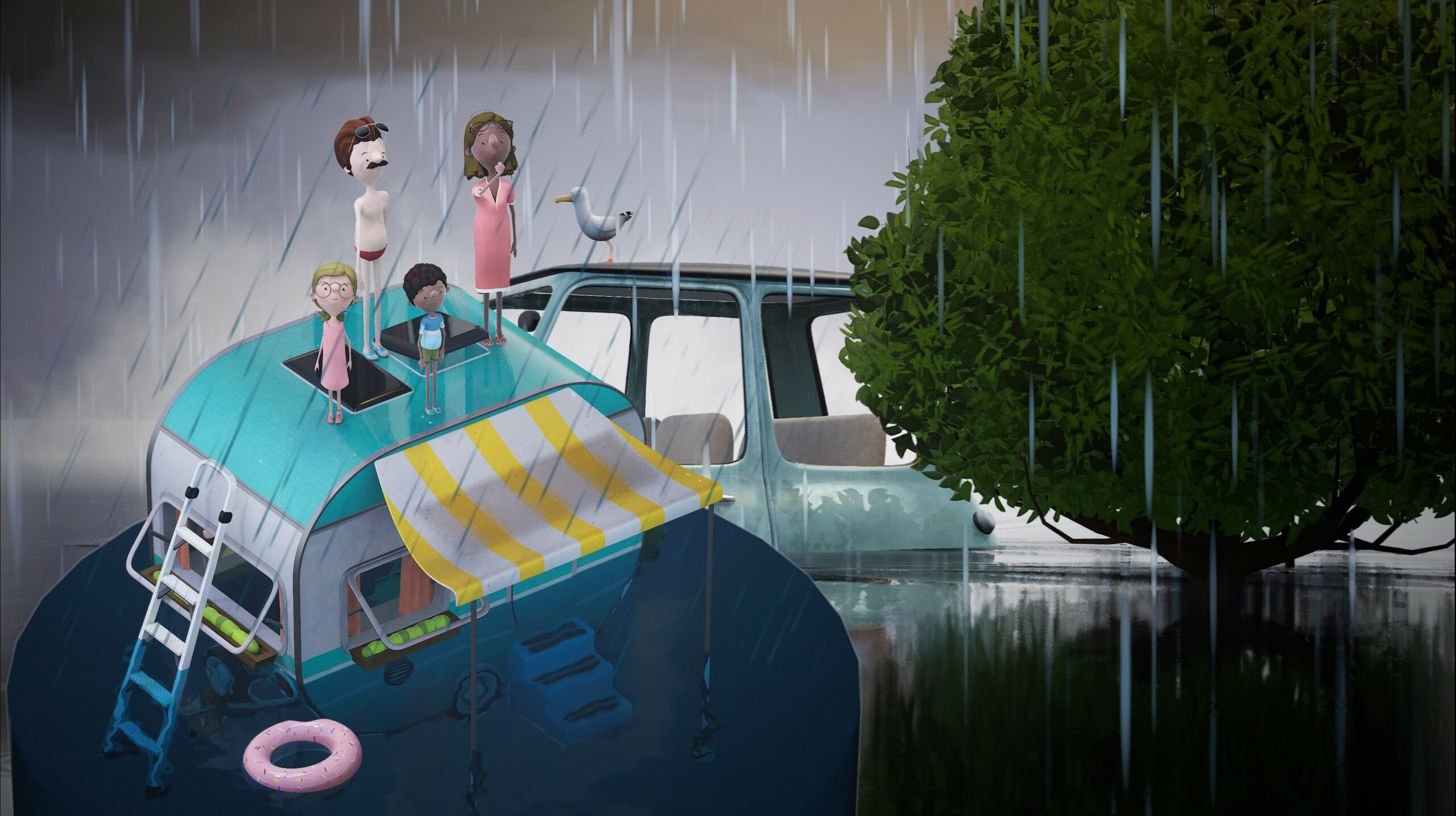
Watch Mollie’s family respond to a flash flood on their holiday here.
Summer holidays: the long-awaited and much anticipated holiday period that many plan for in advance. Sunscreens are slathered, ice creams are consumed in record speeds and parents tirelessly pack all the summer holiday necessities. Knowing that the British weather cannot always be relied upon to bring cloudless blue skies, we often plan for all scenarios. However, there is one scenario that we don’t usually expect during the summer – flash flooding.
We tend to associate stormy weather with winter months, but thanks to our changing climate, we can expect to experience more intense summer rainfall more frequently in coming years. Many of the most extreme rainfalls in the United Kingdom have occurred in the southwest of England between the months of June and August. In these months, warm southerly air flow hits mountainous terrain, increasing chances of unstable weather. When a significant amount of heavy rain falls in a short period of time, steep fast-flowing rivers and urban drainage cannot cope, leading to deep, fast-moving water. There are 76 ‘Rapid Response Catchment’ drainage areas in Devon and Cornwall, which include watercourses that respond very quickly to heavy rainfall.
Flash floods can happen anywhere (e.g., far away from rivers and the sea), and even in areas that have not flooded before or flooded for a long time. They can also happen on clear and sunny days when a storm has struck higher ground. They are very difficult to predict as they are often caused by sudden, heavy rainfall in specific areas, rather than widespread rainfall across a larger region. This means that, unlike other types of flooding, flooding can happen before flood warnings can be issued by the Environment Agency. These floods can cause danger to life due to the depth and speed of the water, along with how quickly water levels can rise.
This year marks 20 years since the small village of Boscastle, Cornwall, faced a devastating flash flood in August 2004. A month’s worth of rain fell in just two hours, causing a rush of water to sweep through the village. Cars were swept out to sea, houses and other buildings were very badly damaged and people had to act quickly to survive. Fortunately, no lives were lost, but there were many long-term impacts. The estimated long-term financial cost through loss of tourism was estimated to be £50 million.
Tourists are especially vulnerable to the dangers of flash flooding, as they are less likely to be familiar with the local area (and flood hotspots) and often stay in tents and caravans, which cannot withstand the force of rapidly moving water. This summer, the Environment Agency are sharing an animation in tourist hotspots across Devon and Cornwall, to improve awareness of the dangers of flash flooding and reduce risk to life.
Knowing the warning signs of flash flooding can help you to stay safe:
- Heavy rain and/or severe weather reports
- Quickly rising river levels, with dark churning water
- Rainfall building up in urban areas (and not draining away)
- Debris build-up in rivers, leading to a surge of water
Being prepared can help you to respond quickly and calmly:
- Create a personal flood plan / understand the evacuation procedures for where you are staying
- Assemble an emergency flood kit
- Shelter on higher ground or in a building at least two-storeys high
- Don’t walk or drive through flood water
- Call 999 if in immediate danger, and follow instructions
- Sign up for Met Office severe weather warnings
- Check for flooding in the next 5 days
- Check long-term flood risk
- Sign up for free flood warnings (text, email or phone)
Credit: Leonora Hansen (Environment Agency) 2024